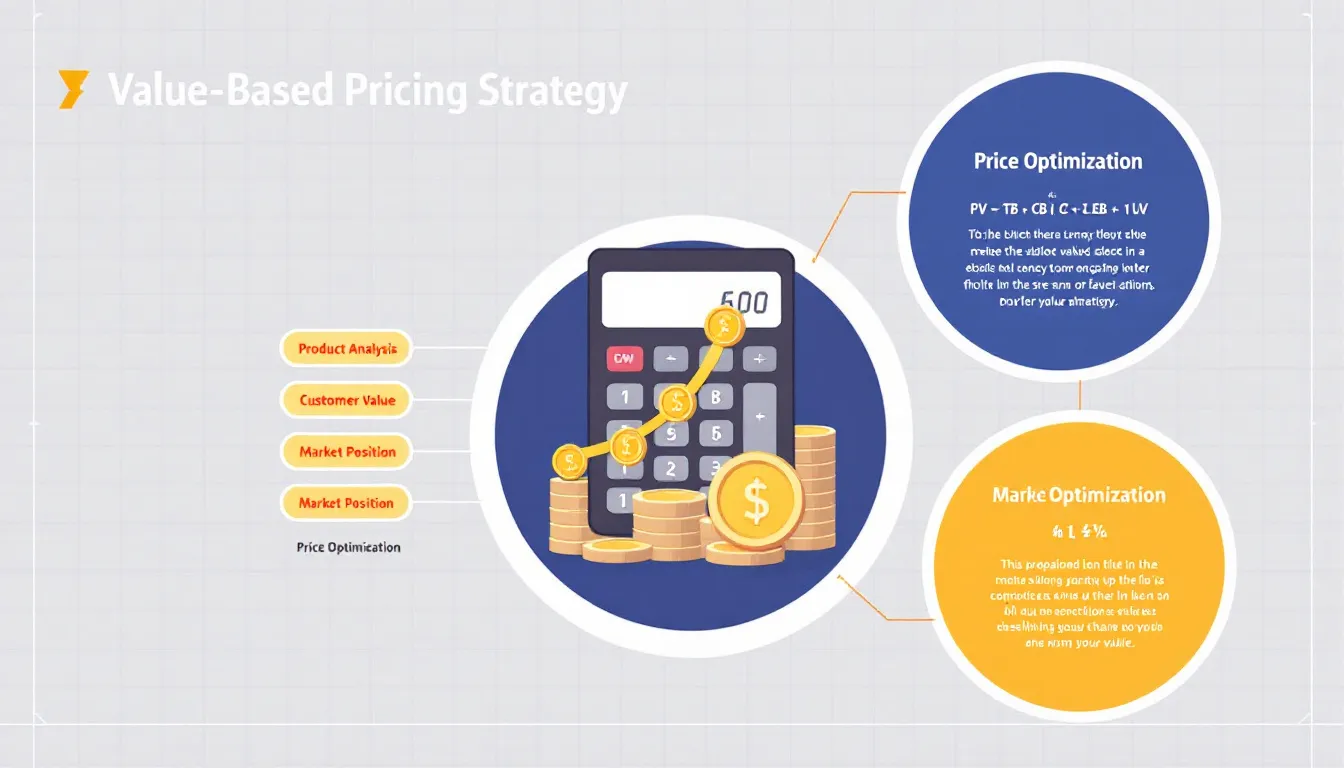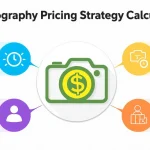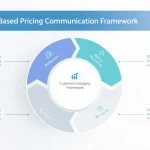Is this tool helpful?
How to Use the Value-Based Pricing Strategy Generator
The Value-Based Pricing Strategy Generator consists of five key input fields designed to help businesses develop an effective pricing strategy. Here’s a detailed guide on filling out each section:
1. Product/Service Description
Enter a comprehensive description of your offering. For example:
- Custom mobile app development services with specialized focus on AR/VR integration and cross-platform compatibility
- Personalized fitness coaching program including nutrition planning, weekly check-ins, and custom workout routines
2. Target Customer Profile
Define your ideal customer segment with specific characteristics. Sample inputs:
- Enterprise-level manufacturing companies seeking digital transformation solutions, with 500+ employees and $50M+ annual revenue
- Health-conscious professionals aged 30-45 in urban areas, with disposable income and limited time for fitness planning
3. Current Pricing Information
Share your existing pricing model (optional). Example entries:
- Tiered subscription model: Basic ($99/month), Pro ($199/month), Enterprise ($499/month)
- Project-based pricing ranging from $5,000 to $25,000 per engagement
4. Unique Value Propositions
List your key differentiators and benefits. Sample entries:
- Proprietary AI-driven analytics platform, certified security compliance, dedicated project manager
- Industry-leading response time, 99.9% uptime guarantee, white-glove customer support
5. Competitor Analysis
Document relevant market information (optional). Example inputs:
- Major competitor A offers basic package at $150/hour with standard features, Competitor B focuses on enterprise clients with minimum $50,000 engagements
- Market average pricing ranges from $80-200/hour with varying service levels and expertise
Understanding Value-Based Pricing Strategy
Value-based pricing is a strategic approach that sets prices primarily based on the perceived value to the customer, rather than traditional cost-plus or competition-based methods. This calculator helps businesses analyze and implement value-based pricing by considering multiple factors that contribute to customer perceived value.
The Mathematical Foundation
The value-based pricing formula considers multiple components:
$$PV = (TB + CB + EB) × (1 + UV)$$Where:
- PV = Perceived Value
- TB = Tangible Benefits
- CB = Competitive Benefits
- EB = Emotional Benefits
- UV = Unique Value Multiplier
Benefits of Using the Value-Based Pricing Calculator
1. Strategic Advantage
- Identify optimal price points that reflect true value delivery
- Maximize profit margins without sacrificing market share
- Align pricing strategy with customer perception and willingness to pay
- Create sustainable competitive advantages
2. Customer-Centric Approach
- Better understanding of customer value drivers
- Enhanced ability to communicate value proposition
- Improved customer satisfaction through value alignment
- Stronger customer relationships built on value delivery
3. Business Growth
- Increased revenue through optimized pricing
- Better market positioning
- Improved customer retention
- Enhanced brand perception
Practical Applications and Solutions
Case Study 1: Software as a Service (SaaS)
A cloud-based project management software company used the calculator to restructure their pricing model:
- Initial cost-plus pricing: $29/user/month
- After value-based analysis: $79/user/month for premium features
- Result: 180% revenue increase with only 12% customer churn
Case Study 2: Professional Services
A marketing agency transformed their pricing strategy:
- Original hourly rate: $150/hour
- New value-based model: Starting at $10,000 per project
- Outcome: 250% increase in average project value
Implementation Strategies
1. Value Communication
- Develop clear value propositions
- Create detailed case studies
- Implement value demonstration tools
- Train sales team on value articulation
2. Market Segmentation
- Identify high-value customer segments
- Customize offerings for specific segments
- Develop segment-specific pricing strategies
- Create targeted marketing messages
Frequently Asked Questions
Q: How often should I update my value-based pricing strategy?
Regular reviews every 3-6 months are recommended to ensure alignment with market conditions and customer value perception. Major market changes or significant product updates may require immediate strategy adjustments.
Q: Can value-based pricing work for commodity products?
Yes, even commodity products can benefit from value-based pricing by focusing on unique service elements, delivery methods, or bundling strategies that create additional value for customers.
Q: How do I determine the perceived value of my offering?
Conduct customer surveys, interviews, and market research to understand what features and benefits customers value most. Analysis of customer behavior, purchasing patterns, and competitive alternatives also provides valuable insights.
Q: Should I completely abandon cost-based pricing considerations?
No, while value-based pricing focuses on customer perceived value, understanding your costs remains important for ensuring profitability and setting minimum price thresholds.
Q: How can I convince stakeholders to adopt value-based pricing?
Present case studies, ROI calculations, and pilot program results. Demonstrate how value-based pricing can lead to improved profitability and stronger customer relationships while maintaining competitive advantage.
Best Practices for Success
- Regularly gather customer feedback and market intelligence
- Maintain detailed documentation of value drivers and pricing decisions
- Invest in customer education and value communication
- Monitor competitive landscape and market trends
- Develop clear value metrics and tracking mechanisms
- Build flexible pricing models that can adapt to changing market conditions
- Create strong value communication materials and sales tools
- Train team members on value-based selling techniques
Important Disclaimer
The calculations, results, and content provided by our tools are not guaranteed to be accurate, complete, or reliable. Users are responsible for verifying and interpreting the results. Our content and tools may contain errors, biases, or inconsistencies. Do not enter personal data, sensitive information, or personally identifiable information in our web forms or tools. Such data entry violates our terms of service and may result in unauthorized disclosure to third parties. We reserve the right to save inputs and outputs from our tools for the purposes of error debugging, bias identification, and performance improvement. External companies providing AI models used in our tools may also save and process data in accordance with their own policies. By using our tools, you consent to this data collection and processing. We reserve the right to limit the usage of our tools based on current usability factors.







